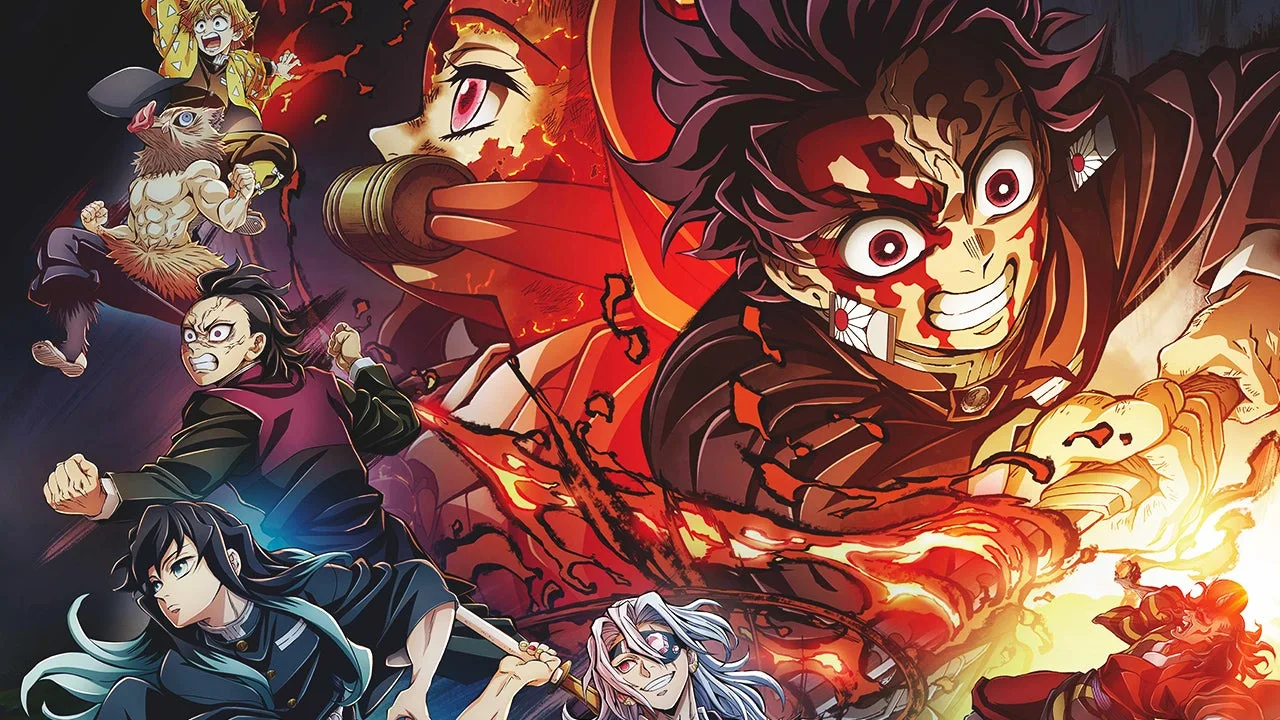Demon Slayer: Kimetsu no Yaiba – To the Hashira Training marks the wildly popular anime series’ third cinematic outing. But while ufotable’s gorgeously animated interpretation of Koyoharu Gotouge’s manga deserves to be seen on the largest screen possible, To the Hashira Training continues an unfortunate trend started by its immediate predecessor, 2023’s To the Swordsmith Village: Unlike the first Demon Slayer movie, Mugen Train, this isn’t a standalone story but rather a compilation of two episodes from the TV show. It takes for granted that the audience is fully caught up on the high-octane adventures of Tanjiro Kamado, and despite all the visual splendor on display, this patchwork format makes for unfulfilling storytelling divorced from its larger context.
Pairing the finale of Demon Slayer’s third season with the premiere of its upcoming fourth, To the Hashira Training is just the very end of one story followed by the very beginning of another, related one. In many ways, it’s good, because it’s two episodes of Demon Slayer, and Demon Slayer is a good show. But being dropped into a climax, seeing its big emotional payoff unfold, and then watching 30 minutes of setup for the next chapter make for a bizarre filmgoing experience.
While we receive a very brief introduction to the other times Tanjiro has bested a demon, To the Hashira Training is decidedly not for newcomers to Demon Slayer. You won’t get an explanation of who the main characters are, what relationship they have to one another, what they’re doing, or why they’re doing it. While many movies based on anime series go far too hard in the opposite direction – wasting precious time to over-explain their basic tenets – To the Hashira Training assumes you’re here to watch the new episode early and on the big screen. Honestly, that’s a fair assumption, especially in Japan, where the film topped the box office during its opening weekend.
What we said about Demon Slayer season 3
Demon Slayer season 3 has some spectacular moments that continue to show ufotable’s ability to make every frame pop with color and gravitas, and the story moves forward significantly, especially when it comes to Nezuko – who finally becomes a character this time around. For the most part, though, it feels like too little, too late. After the the Mugen Train movie’s success in translating a short story arc into a single feature rather than multiple episodes, season 3 feels like a step backward, stretching a short arc into a bloated and dull season that overstayed its welcome. – Rafael Motamayor
Read the full Demon Slayer season 3 review.
It’s also an assumption that’s immediately clear. After its brief intro, To the Hashira Training opens on a chase scene already in progress, because that’s where the season 3 finale begins, too. It doesn’t explain what happened in the story to get us here or remind us who’s involved. Even if it’s only been a few months since you watched the Swordsmith Village arc, it’s a good idea to brush up on what was happening before its conclusion. Fortunately, the episode’s Big Moment still hits hard – assuming you know the characters, of course.
Dozens of “yokatta!”s later, episode one of the Hashira Training arc arrives, exposition- and lore-heavy – though the adaptation smartly adds an incredible fight sequence with the Wind and Snake Hashiras. The scene is brilliantly choreographed and successfully endears us to two characters who, before now, have had very little screen time. It’s the obvious highlight of the episode, which contains plenty of delightful moments and intriguing revelations, but no more big showstoppers. It works excellently as a season premiere, but not quite as naturally as the second half of a movie. All of the action sequences in To the Hashira Training take place during the first 60% of the film.
It’s tempting to recommend just waiting to watch the Hashira Training arc at home. But if you’re a big Demon Slayer fan or a lover of animation generally, the chance to catch ufotable’s stunning work on the big screen – or in IMAX, if you get so lucky – makes To the Hashira Training worth heading to the theater. Demon Slayer’s animation is often compared favorably to that of big-budget studio movies, so to watch a pair of episodes presented exactly like a big-budget studio movie feels not only natural, but like a genuine treat. The detail of the backgrounds, the dynamic ways in which the characters interact with their environment, and ufotable’s virtuosic blending of traditional and computer animation all feel extra potent when you’re able to take in every mossy, rusty shingle of a rooftop.


